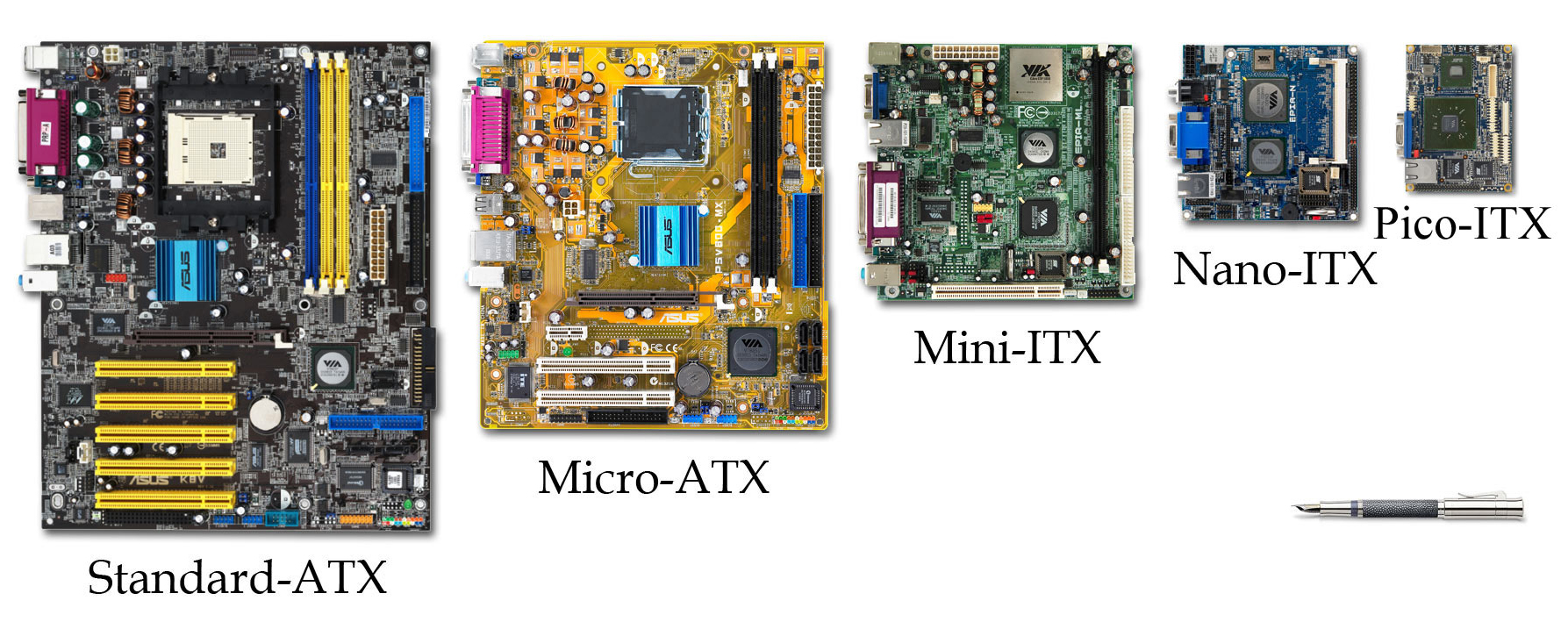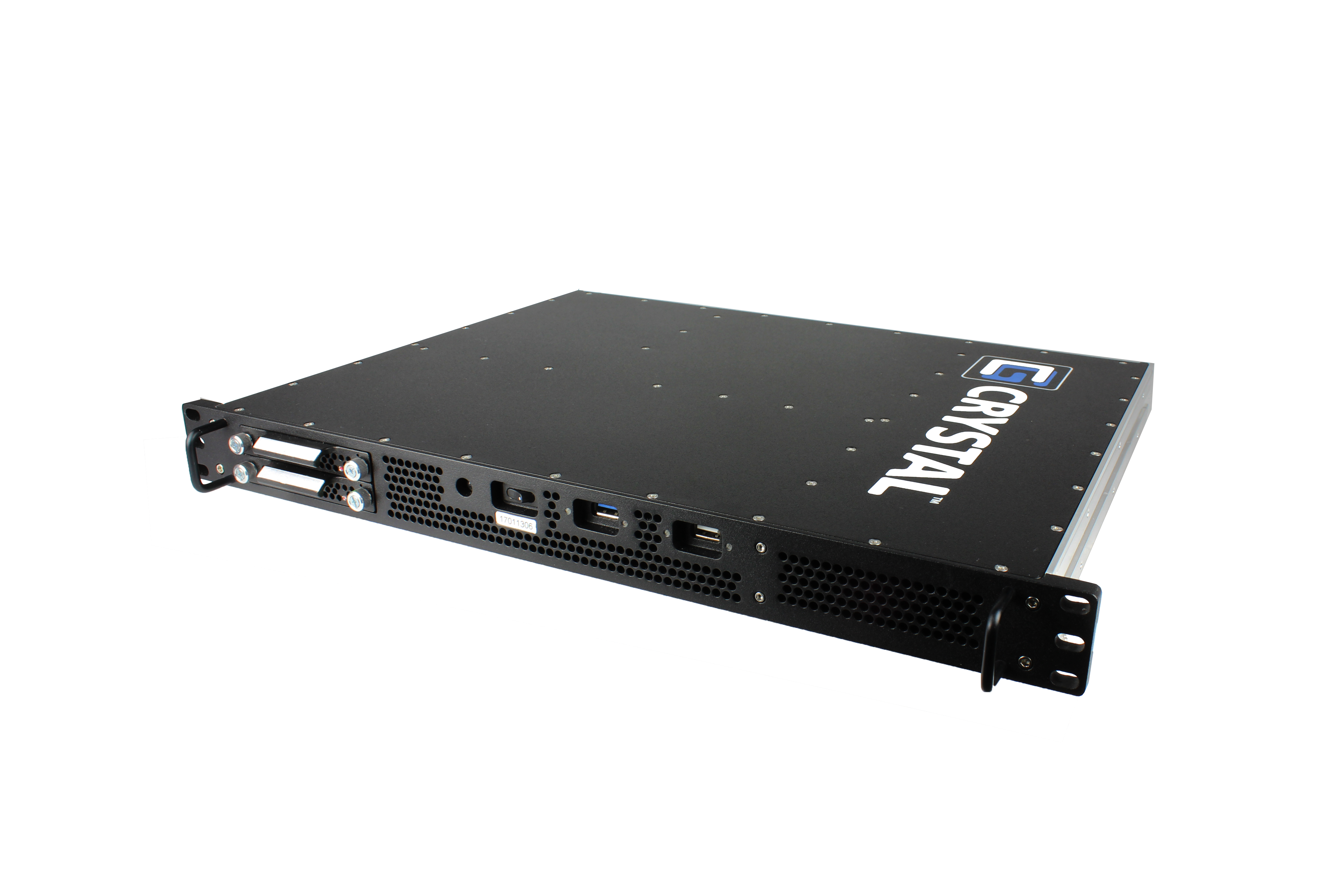|
PICOe
PICOe (PICO Express) within computer hardware is a computer form factor in which a half sized card slot Single Board Computer (SBC) is inserted into a gold fingers card slot of a passive or active backplane A backplane (or "backplane system") is a group of electrical connectors in parallel with each other, so that each pin of each connector is linked to the same relative pin of all the other connectors, forming a computer bus. It is used as a backbo .... Expansion peripherals of the computer system are connected to other slots of the backplane. Electrical Bus Interface PICOe provides one PCI bus and several PCI Express buses of varying and configurable widths to provide dual faceted interface with other devices on the backplane. Power Power is provided to the PICOe SBC and peripheral expansion cards via the backplane. Connectors The PICOe computer card slot uses a unique connector footprint with stepped connector depths to promote physical stability in the slot for ruggedizat ... [...More Info...] [...Related Items...] OR: [Wikipedia] [Google] [Baidu] |
Computer Hardware
Computer hardware includes the physical parts of a computer, such as the case, central processing unit (CPU), random access memory (RAM), monitor, mouse, keyboard, computer data storage, graphics card, sound card, speakers and motherboard. By contrast, software is the set of instructions that can be stored and run by hardware. Hardware is so-termed because it is " hard" or rigid with respect to changes, whereas software is "soft" because it is easy to change. Hardware is typically directed by the software to execute any command or instruction. A combination of hardware and software forms a usable computing system, although other systems exist with only hardware. Von Neumann architecture The template for all modern computers is the Von Neumann architecture, detailed in a 1945 paper by Hungarian mathematician John von Neumann. This describes a design architecture for an electronic digital computer with subdivisions of a processing unit consisting of an arithmet ... [...More Info...] [...Related Items...] OR: [Wikipedia] [Google] [Baidu] |
Computer Form Factor
Form factor is a hardware design aspect that defines and prescribes the size, shape, and other physical specifications of components, particularly in electronics. A form factor may represent a broad class of similarly sized components, or it may prescribe a specific standard. It may also define an entire system, as in a computer form factor. Evolution and standardization As electronic hardware has become smaller following Moore's law and related patterns, ever-smaller form factors have become feasible. Specific technological advances, such as PCI Express, have had a significant design impact, though form factors have historically been slower to evolve than individual components. Standardization of form factors is vital for compatibility of hardware from different manufacturers. Trade-offs Smaller form factors may offer more efficient use of limited space, greater flexibility in the placement of components within a larger assembly, reduced use of material, and greater ease of tra ... [...More Info...] [...Related Items...] OR: [Wikipedia] [Google] [Baidu] |
Single Board Computer
A single-board computer (SBC) is a complete computer built on a single circuit board, with microprocessor(s), memory, input/output (I/O) and other features required of a functional computer. Single-board computers are commonly made as demonstration or development systems, for educational systems, or for use as embedded computer controllers. Many types of home computers or portable computers integrate all their functions onto a single printed circuit board. Unlike a desktop personal computer, single board computers often do not rely on expansion slots for peripheral functions or expansion. Single board computers have been built using a wide range of microprocessors. Simple designs, such as those built by computer hobbyists, often use static RAM and low-cost 32- or 64-bit processors like ARM. Other types, such as blade servers, would perform similar to a server computer, only in a more compact format. A computer-on-module is a type of single-board computer made to plug into a ca ... [...More Info...] [...Related Items...] OR: [Wikipedia] [Google] [Baidu] |
Backplane
A backplane (or "backplane system") is a group of electrical connectors in parallel with each other, so that each pin of each connector is linked to the same relative pin of all the other connectors, forming a computer bus. It is used as a backbone to connect several printed circuit boards together to make up a complete computer system. Backplanes commonly use a printed circuit board, but wire-wrapped backplanes have also been used in minicomputers and high-reliability applications. A backplane is generally differentiated from a motherboard by the lack of on-board processing and storage elements. A backplane uses plug-in cards for storage and processing. Usage Early microcomputer systems like the Altair 8800 used a backplane for the processor and expansion cards. Backplanes are normally used in preference to cables because of their greater reliability. In a cabled system, the cables need to be flexed every time that a card is added or removed from the system; this flexing eve ... [...More Info...] [...Related Items...] OR: [Wikipedia] [Google] [Baidu] |
Rugged Computer
A rugged computer or ruggedized computer is a computer specifically designed to operate reliably in harsh usage environments and conditions, such as strong vibrations, extreme temperatures and wet or dusty conditions. They are designed from inception for the type of rough use typified by these conditions, not just in the external housing but in the internal components and cooling arrangements as well.What you need to know before purchasing a rugged mobile computer , ''LXE'', 2004. Typical environments for rugged s, |
Conventional PCI
Peripheral Component Interconnect (PCI) is a local computer bus for attaching hardware devices in a computer and is part of the PCI Local Bus standard. The PCI bus supports the functions found on a processor bus but in a standardized format that is independent of any given processor's native bus. Devices connected to the PCI bus appear to a bus master to be connected directly to its own bus and are assigned addresses in the processor's address space. It is a parallel bus, synchronous to a single bus clock. Attached devices can take either the form of an integrated circuit fitted onto the motherboard (called a ''planar device'' in the PCI specification) or an expansion card that fits into a slot. The PCI Local Bus was first implemented in IBM PC compatibles, where it displaced the combination of several slow Industry Standard Architecture (ISA) slots and one fast VESA Local Bus (VLB) slot as the bus configuration. It has subsequently been adopted for other computer types ... [...More Info...] [...Related Items...] OR: [Wikipedia] [Google] [Baidu] |





